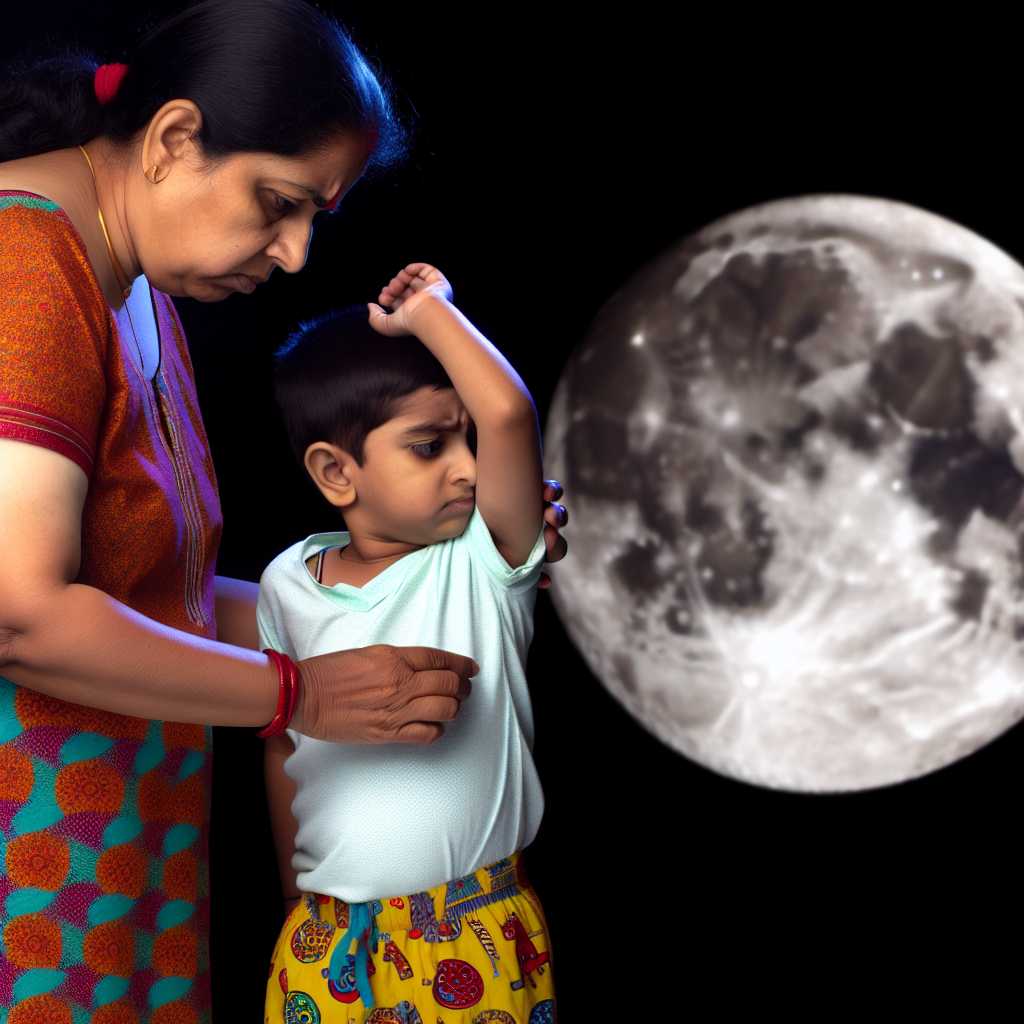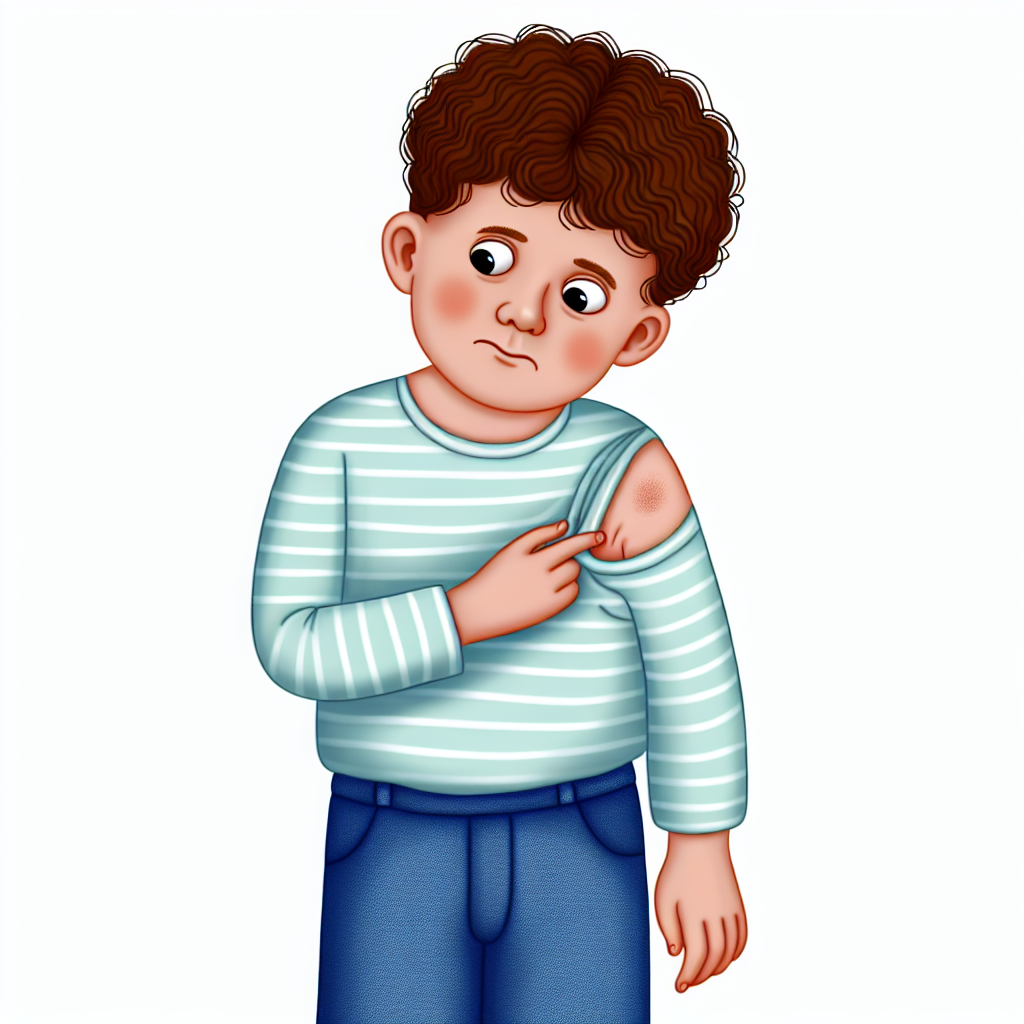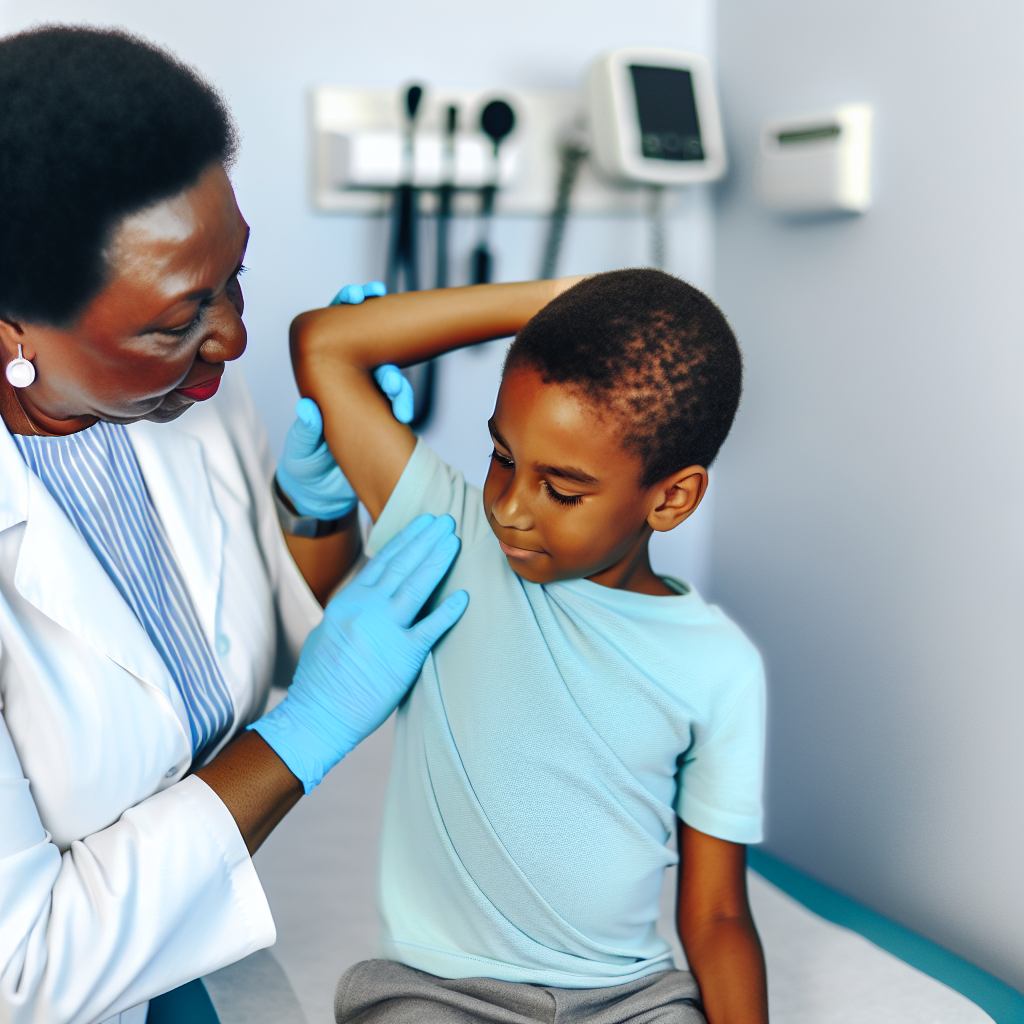This article discusses the causes, symptoms, and management of Armpit Lumps in Children. While most are harmless and go away on their own, some may be a sign of more serious conditions like lymphoma or leukemia. Parents should monitor their child’s armpit lumps and seek medical attention if they are painful, red, warm, or growing larger. Good hygiene, parental guidance, and regular child care are crucial for managing children’s health regarding pediatric armpit lumps.
As parents, we always want to ensure the well-being of our children. However, it’s inevitable for them to experience health issues, including armpit lumps. Pediatric armpit lumps can be a cause of concern for parents, but it’s important to understand that not all lumps are harmful. In this article, we’ll provide a comprehensive guide for parents to understand the common causes of armpit lumps in children, when to worry about them, and how to manage and prevent them. So, let’s dive into the world of children’s health and learn about pediatric armpit lumps.
1. Understanding Pediatric Armpit Lumps: A Guide for Parents

As a parent, it’s natural to be concerned when you notice a lump or bump on your child’s body. One area that may cause particular worry is the armpit, where lymph nodes are located. While armpit lumps in children are not uncommon, it’s important to understand the various causes and when to seek medical attention.
Pediatric armpit lumps can result from a variety of factors, including infections, inflammation, and even certain medications. One of the most common causes is swollen lymph nodes, which can occur in response to an infection or illness. In many cases, the lump will go away on its own once the underlying issue is treated.
It’s important to note that not all armpit lumps are benign. Rarely, they can be a sign of a more serious condition, such as lymphoma or leukemia. While these instances are rare, it’s important to be aware of the possibility and seek medical attention if there are any concerning symptoms.
As a parent, it can be difficult to know when to seek medical attention for your child’s armpit lump. If the lump is painful, red, or warm to the touch, or if your child has a fever or other symptoms, it’s important to consult a healthcare provider. Additionally, if the lump doesn’t go away on its own or seems to be growing larger, medical attention should be sought.
In general, keeping an eye on your child’s armpit lumps and monitoring any changes is key. Encourage good hygiene practices, such as regular hand washing and avoiding sharing personal items, to prevent infections. And, of course, always consult with your child’s healthcare provider if you have any concerns about their health.
In summary, pediatric armpit lumps are often benign and can be managed with good hygiene and monitoring. However, it’s important to be aware of potential serious causes and to seek medical attention if there are any concerning symptoms. As a parent, staying informed and staying in touch with your child’s healthcare provider is key to ensuring their overall health and well-being.
2. Common Causes of Armpit Lumps in Children: What You Need to Know

Armpit lumps in children can be a concerning issue for parents, but it is important to know that they are often harmless. Here are some common causes of pediatric armpit lumps that parents should be aware of:
1. Lymph nodes: Lymph nodes are small, bean-shaped structures that are part of the immune system. They can be found throughout the body, including in the armpit. When a child has an infection, the lymph nodes in the armpit may become swollen and tender, causing a lump. Common infections that can cause this include colds, flu, and ear infections.
2. Cysts: Cysts are noncancerous growths that can occur anywhere on the body, including in the armpit. They are usually filled with fluid or pus and can be painful if they grow large enough. Cysts may need to be drained by a doctor if they become infected or cause discomfort.
3. Hidradenitis suppurativa: This is a chronic skin condition that causes painful bumps and lumps in the armpits, groin, and other areas with sweat glands. It is more common in teenagers and young adults and may require treatment with antibiotics or other medications.
4. Allergic reactions: If a child develops a rash or hives in response to an allergen, such as a medication or food, they may also develop swollen lymph nodes in the armpit.
5. Cancer: Although rare, some types of cancer, such as lymphoma or leukemia, can cause swollen lymph nodes in the armpit. If a child has other symptoms, such as fever, weight loss, or night sweats, it is important to seek medical attention.
In general, if your child has a small, painless armpit lump, it is likely nothing to worry about. However, if the lump is large, painful, or accompanied by other symptoms, you should consult a pediatrician. Parental guidance and regular child care can help identify and treat any potential issues early on, ensuring your child’s continued health and well-being.
3. When to Worry About Armpit Lumps in Children: Signs and Symptoms

While most armpit lumps in children are harmless and resolve on their own, there are certain signs and symptoms that should prompt parents to seek medical attention for their child. Here are some red flags to watch out for:
1. Pain and discomfort: If the lump is causing your child pain or discomfort, it is a cause for concern. They may also experience tenderness, swelling, or redness around the lump.
2. Rapidly growing lump: If the lump is growing rapidly in size or seems to be getting bigger, it may indicate a more serious underlying condition and requires immediate medical attention.
3. Fever and other systemic symptoms: If your child is experiencing a fever, fatigue, or other systemic symptoms along with the lump, it may be a sign of infection or inflammation. These symptoms should not be ignored and require prompt medical evaluation.
4. Hard and immovable lump: If the lump is hard, immovable, and does not seem to be going away, it may be a sign of a tumor or other serious condition. It is important to have it evaluated by a pediatrician or specialist.
In summary, while most armpit lumps in children are benign and resolve without treatment, it is important for parents to be aware of the signs and symptoms that warrant medical attention. If you notice any of the above red flags, seek prompt medical evaluation for your child’s health and well-being. With proper parental guidance and care, most cases of pediatric armpit lumps can be effectively managed and treated.
4. Parental Guidance for Managing Armpit Lumps in Children: Tips and Advice

When a child develops an armpit lump, it can be a concerning experience for parents. However, there are some tips and advice that can help parents manage the situation and provide their child with appropriate care.
Firstly, it is important to observe the lump for any changes in size, shape, or color. If the lump grows in size or shows signs of infection, such as redness or warmth, it is important to seek medical attention promptly.
Parents should also encourage their child to maintain good hygiene by regularly washing the affected area with mild soap and warm water. It is important to avoid using harsh chemicals or scrubs that could irritate the skin.
In cases where the lump is caused by an infection, parents should ensure that their child receives appropriate medical treatment, which may include antibiotics or other medication. It is important to follow the doctor’s instructions carefully and complete the full course of treatment.
If the armpit lump is due to a more serious underlying condition, such as a tumor or cyst, parents should work closely with their child’s healthcare provider to develop a treatment plan that meets their child’s needs.
Finally, parents should provide emotional support for their child during this time, as the experience of having an armpit lump can be scary or uncomfortable. By providing comfort and reassurance, parents can help their child feel more at ease and less anxious about the situation.
In conclusion, armpit lumps in children can be a common occurrence, but it is important for parents to seek medical attention if needed and provide their child with appropriate care. By following the tips and advice outlined above, parents can ensure that their child’s health and well-being are prioritized.
5. Child Care and Armpit Lumps in Children: How to Prevent and Treat Them

When it comes to child care, it’s important to be aware of any changes in your child’s body, including the presence of armpit lumps. While most armpit lumps in children are benign and not a cause for concern, there are ways to prevent and treat them.
Prevention is key when it comes to pediatric armpit lumps. Encouraging your child to maintain good hygiene, including regular baths or showers, can help prevent the buildup of bacteria and sweat in the armpit area. Additionally, ensuring your child wears loose-fitting clothing and avoiding tight undergarments can also help prevent the development of armpit lumps.
If your child does develop an armpit lump, it’s important to seek medical attention to determine the cause and appropriate course of treatment. In some cases, a simple warm compress applied to the affected area can help reduce swelling and discomfort. However, if the lump is caused by an infection or other underlying medical condition, antibiotics or other treatments may be necessary.
As a parent, it’s important to provide guidance and support for your child during this time. Reassure them that armpit lumps are common and can be treated. Encourage them to speak openly about any discomfort or concerns they may have, and make sure they understand the importance of maintaining good hygiene and seeking medical attention if necessary.
In summary, while pediatric armpit lumps are common and often benign, prevention and early treatment are key. As a parent, it’s important to provide guidance and support for your child during this time, and to seek medical attention if necessary. By staying informed and proactive, you can help ensure the health and well-being of your child.
In conclusion, armpit lumps in children are a common occurrence that can be caused by a variety of factors. While most lumps are harmless and can be easily managed, it is important for parents to remain vigilant and seek medical attention if they notice any signs or symptoms of a more serious condition. By following the parental guidance and child care tips outlined in this article, parents can ensure their child’s health and well-being and promote healthy habits that will last a lifetime. Remember, when it comes to children’s health, knowledge is power, and by staying informed and proactive, parents can help their children thrive.
